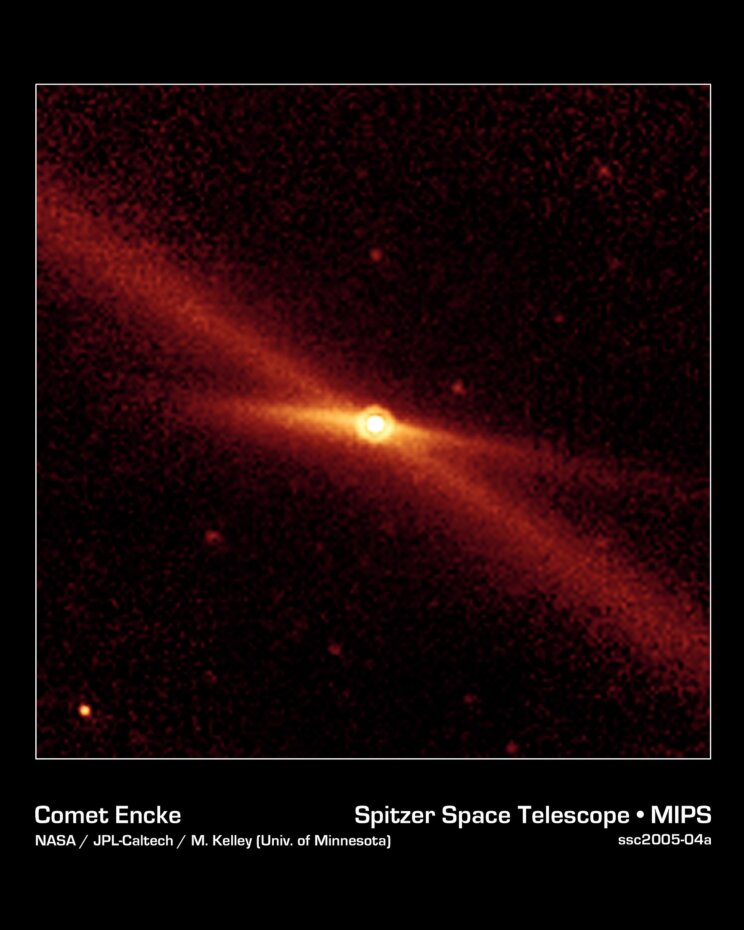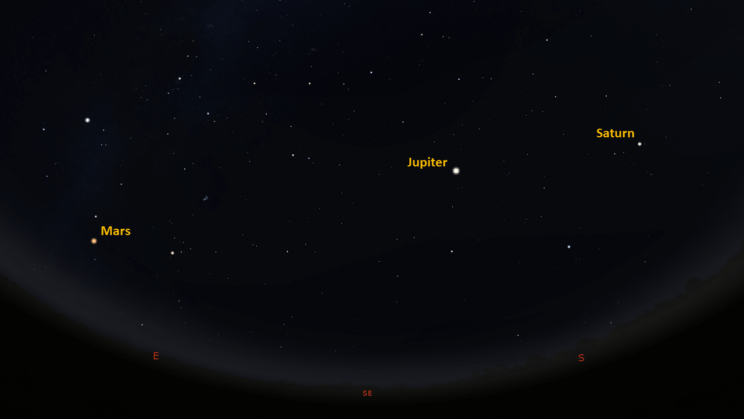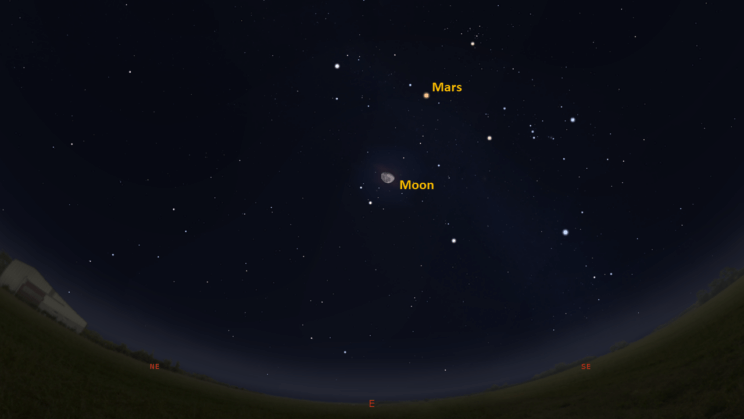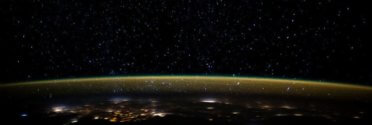This is the Saint Louis Science Center’s NIGHT SKY UPDATE for the week of Friday, November 11, 2022.
Information updated weekly or as needed.
Times given as local St. Louis time which is Central Standard Time (CST). For definitions of terminology used in the night sky update, click the highlighted text. If relying on times posted in Universal Time (UT), St. louis is -6 hours when CST.
Public Telescope Viewings
Public telescope viewings at the McDonnell Planetarium have returned as part of the Saint Louis Science Center’s First Friday event. As we ease back into our telescope nights, they will operate a little different than before. To take part in our telescope viewings you will need to get a ticket for the planetarium show that starts at 7:00 p.m. as part of the First Friday event. Tickets for the First Friday planetarium show are free, but they can only be picked up at the Saint Louis Science Center on the night of the event. After the planetarium show ends you will be able to go outside and look through telescopes weather permitting. We will update this posting if anything changes.
Observing Highlight of the Week

Comet 2P/Encke seen by Spitzer Space Telescope. Image credit: NASA/JPL-Caltech/M. Kelly (Univ. of Minnesota)
This week starts with the peak of a meteor shower and ends with another. The two showers in question are the Northern Taurids and the Leonids. The Northern Taurids peak on November 11, 2022, and the Leonids peak on November 17/18, 2022.
The Northern Taurids are a minor meteor shower that usually produce about 5 meteors per hour during peak activity. The Leonids are a bit better, listed as a major meteor shower that typically produce 15 meteors per hour at peak activity. Both meteor showers exhibit some variability in their max rates making them interesting meteor showers to keep track of.
Like its southern counterpart, the Northern Taurids exhibit a 7-year cycle that tend to produce higher rates of fireballs. When both the Southern and Northern Taurids are near their peak dates, there often is an increase in fireballs. Fireballs are meteors that become brighter than Venus. Both Taurid showers are caused by comet 2P/Encke which orbits the Sun every 3.3 years. This roughly 3-mile-wide comet has been orbiting the Sun for a long time allowing it to deposit a dense stream of debris that falls along the orbital path of the comet. 2P/Encke has depleted its source of fine particles and as such it now releases larger gravel-like debris. This is likely why the Taurid meteors showers are known to produce several fireballs. Even though both Taurid peaks have passes, increased activity often occurs several days after the peak date.
The Leonids normally produce about 15 meteors per hour when at peak activity. 2022, is expected to be a standard year for the Leonids. However, it is well documented that the Leonids have produced events called meteor storms in which thousands of meteors per hour can be seen. These meteor storms appear to occur on a period of 33 years. The periodic behavior is connected to the orbital period of the source of the Leonids which is comet 55P/Temple-Tuttle. This 2.24-mile-wide comet orbits the Sun every 33 years. Each time it does this, the comet deposits a new stream of debris that eventually Earth will encounter. The uptick in meteors seen occurs when the comet is near perihelion which next occurs in 2031. Unfortunately, scientists modeling the historic debris streams left by comet 55P/Temple-Tuttle indicate that we will not encounter another dense stream until 2099. It is not the new debris streams that cause the meteor storms but rather streams from past orbits. The last Leonid storms occurred in 1966 and 2002.
The next meteor storm is not expected to occur until 2099 is unfortunate news, but 2022 does offer a slim possibility of an uptick in meteors on a few dates. Models suggest that on November 18, 2022, around 7h UT, we may approach the 1600 dust trail. November 19, 2022, around 6h UT we may encounter the 1733 dust trail. And finally, on November 21, 2022, we may encounter the 1800 dust trail. All these encounters could lead to an increase but the most promising one is on November 19, 2022. As always, there is no guarantee of an increase in activity, but it will be worth getting outside and looking. You can learn more about these minor possibilities at https://www.amsmeteors.org/meteor-showers/meteor-shower-calendar/
The Northern Taurid radiant is in the constellation Taurus. The radiant will be above the eastern horizon around 6:30 p.m. As Taurus climbs higher in the sky, you will have better chances to see meteors. Due to the dense stream of debris from comet 2P/Encke, peak activity lasts for several days centered on the peak date. Your best views will come after midnight.
The Leonid radiant is in the constellation Leo. Leo rises around 11:30 p.m. on November 17, 2022. The radiant will be highest between 2:00 and 5:00 a.m.
If you can, it is always best to travel to a dark place. City skies will diminish how many meteors we see. Other than dark skies, a chair that reclines is recommended. As temperatures drop remember to dress for temperatures colder than it is as you body temperature will drop as you sit around.
The Sun and Moon

The Moon as seen from the International Space Station, on July 31, 2011.
Credit: NASA
Sunrise is at 6:38 a.m. on Friday, November 11 and sunset is at 4:51 p.m. providing us with a bit over 10 hours of daylight. Even after sunset, the light from the Sun will dimly illuminate our sky for roughly 1 hour and 30 minutes. This period is called twilight, which ends around 6:22 p.m. this week. For those with a sundial, local noon occurs around 11:44 a.m. this week.
| Day | Sunrise | Sunset |
|---|---|---|
| 2022-11-11 | 6:38 a.m. | 4:51 p.m. |
| 2022-11-12 | 6:40 a.m. | 4:50 p.m. |
| 2022-11-13 | 6:41 a.m. | 4:49 p.m. |
| 2022-11-14 | 6:42 a.m. | 4:48 p.m. |
| 2022-11-15 | 6:43 a.m. | 4:47 p.m. |
| 2022-11-16 | 6:44 a.m. | 4:47 p.m. |
| 2022-11-17 | 6:45 a.m. | 4:46 p.m. |
| 2022-11-18 | 6:46 a.m. | 4:45 p.m. |
| 2022-11-19 | 6:47 a.m. | 4:45 p.m. |
Moon
Moonrise for Friday, November 11 is at 7:01 p.m. and moonset occurs at 10:49 a.m. on the following morning. Friday, November 11, the Moon will exhibit a waning gibbous phase with 89% of the lunar disk illuminated. Last quarter moon occurs on November 18, 2022, at 7:27 a.m.
International Space Station (ISS) Observing

Visible passes of ISS from St. Louis for the week of November 11 occur during evening hours. The best passes occur on the evenings of November 17 and 18. Use the table below for information about these and other visible passes this week.
Catch ISS from St. Louis starting Friday, November 11
| Date | Starts | Max. altitude | Ends | |||||||
|---|---|---|---|---|---|---|---|---|---|---|
| Time | Alt. | Az. | Time | Alt. | Az. | Time | Alt. | Az. | ||
| 15 Nov | -2 | 18:38:59 | 10 | SSW | 18:40:39 | 25 | S | 18:40:39 | 25 | S |
| 16 Nov | -2.3 | 17:51:11 | 10 | S | 17:53:48 | 22 | SE | 17:54:37 | 20 | ESE |
| 17 Nov | -3.1 | 18:38:35 | 10 | WSW | 18:41:25 | 54 | W | 18:41:25 | 54 | W |
| 18 Nov | -3.8 | 17:50:07 | 10 | SW | 17:35:25 | 70 | SE | 17:55:10 | 25 | ENE |
Magnitude (Mag): The Measure of brightness for a celestial object. The lower the value is, the brighter the object will be.
Altitude (Alt): The angle of a celestial object measured upwards from the observer’s horizon.
Azimuth (Az): The direction of a celestial object, measured clockwise from an observer’s location with north being 0°, east being 90°, south being 180° and west being 270°.
For information about ISS flyovers and other visible satellites, visit www.heavens-above.com
Detailed information regarding all unmanned exploration of our universe, missions past, present, and planned, can be found at Jet Propulsion Laboratories:
The Visible Planets

Looking southeast at 8:00 p.m. on November 12, 2022. Credit: Stellarium, EG

Looking east at 1:00 a.m. on November 13, 2022. Credit: Stellarium, EG.
This week, three naked eye planets are visible. Mars rises before midnight but will still be best seen in late evening and morning hours. Jupiter and Saturn are now evening targets visible not long after sunset.
Mars
Mars rises at 6:41 p.m. Start looking for the red planet around 8:00 p.m. as it clears trees and buildings. Mars is headed towards opposition later this year on December 7, 2022.
Jupiter
Now past opposition, Jupiter will be visible about 30 minutes after sunset. Jupiter reaches superior conjunction on April 11, 2023. As we progress towards this date, we will see Jupiter slowly wander towards the Sun.
Saturn
Now past opposition, Saturn rises before the Sun sets. You can find this giant world in the south about 45 minutes after sunset. Saturn is still a fine target though telescopes and will be a highlight of the evening sky for the rest of the year.
James S. McDonnell Planetarium
Night Sky Update: November 11 – November 19, 2022







